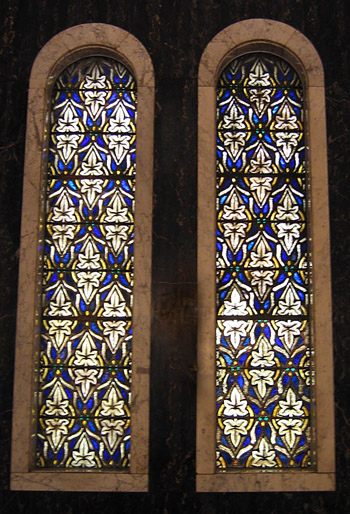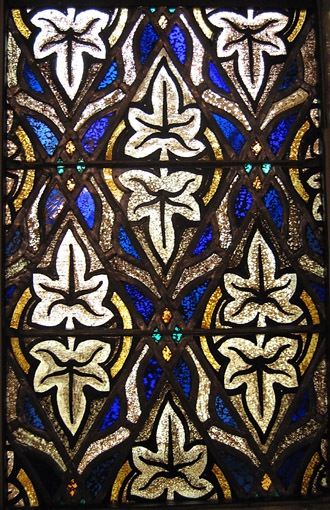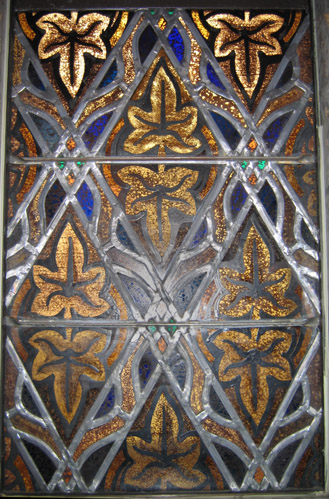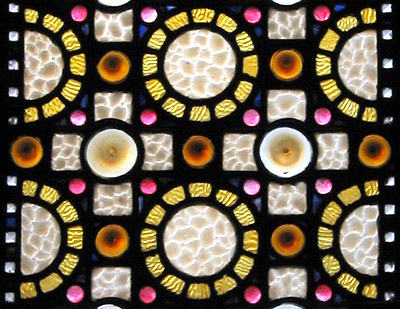May 31, 2005
Cupples House Stained Glass
There are new pages at the website for the Samuel Cupples House at St. Louis University, featuring some info on and photos of the stained glass windows. I still haven't gotten inside the Cupples House. Every time I've found myself at SLU, the place is closed... but it's on my list...
May 21, 2005
St. Louis Cathedral Basilica Windows
This from the Cathedral Basilica in St. Louis, most famous for its mosaics (41 million tesserae is the fugure used, I believe). The Basilica features some interesting decorative stained glass as well -- this is in a chapel on the left as you come in.
full window -

a closer look -

a closer look in reflected light -

there are also these that have lots of interesting old jewels - something I've been looking into recently - I'm looking into making some custom jewels
the full window -

a close up -

May 02, 2005
Exercises in Style
Check out Exercises In Style, an experiment by Matt Madden where the same single page narrative is done over in 99 different sequential narrative styles. Funny and fascinating.
I keep thinking of this in terms of stained glass, and for two different reasons. In one, I've thought of adapting this same single page narrative into the sequential narrative style that is the Gothic stained glass window. I have it in my head and I'm not sure I have the drawing skill to pull it off. But I see it very clearly. He did do one of his pages in the style of the Bayeax Tapestry - close in terms of drawing style but not in the way the narrative would be laid out.
I also think in terms of how this might translate into different styles related to the design of a single stained glass panel. -Could it work at all when the 'content' of a design is often so abstracted or totally abstract? Could you take the same window dimension and the same 'subject' and apply different styles like this - one being a Tiffany window, another a Frank Lloyd Wright, another a Harry Clarke, another a Wilhelmina Geddes, another a Johannes Schreiter, etc? Is it possible? Just curious.